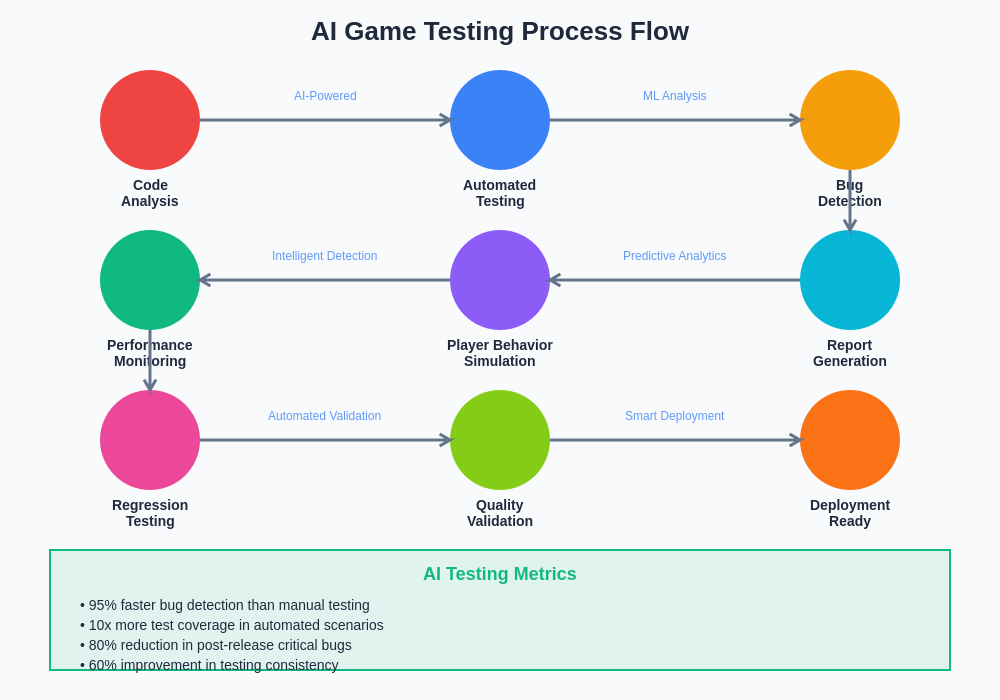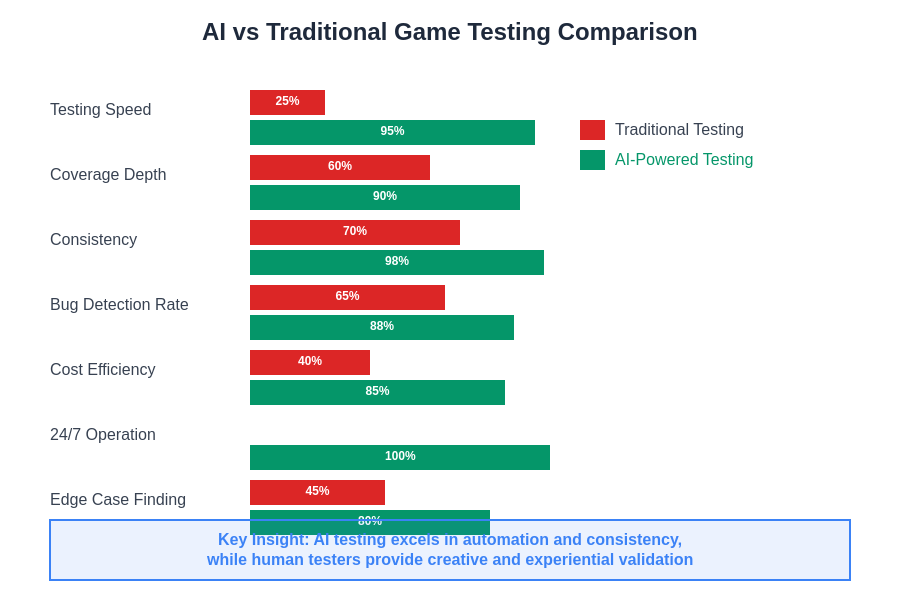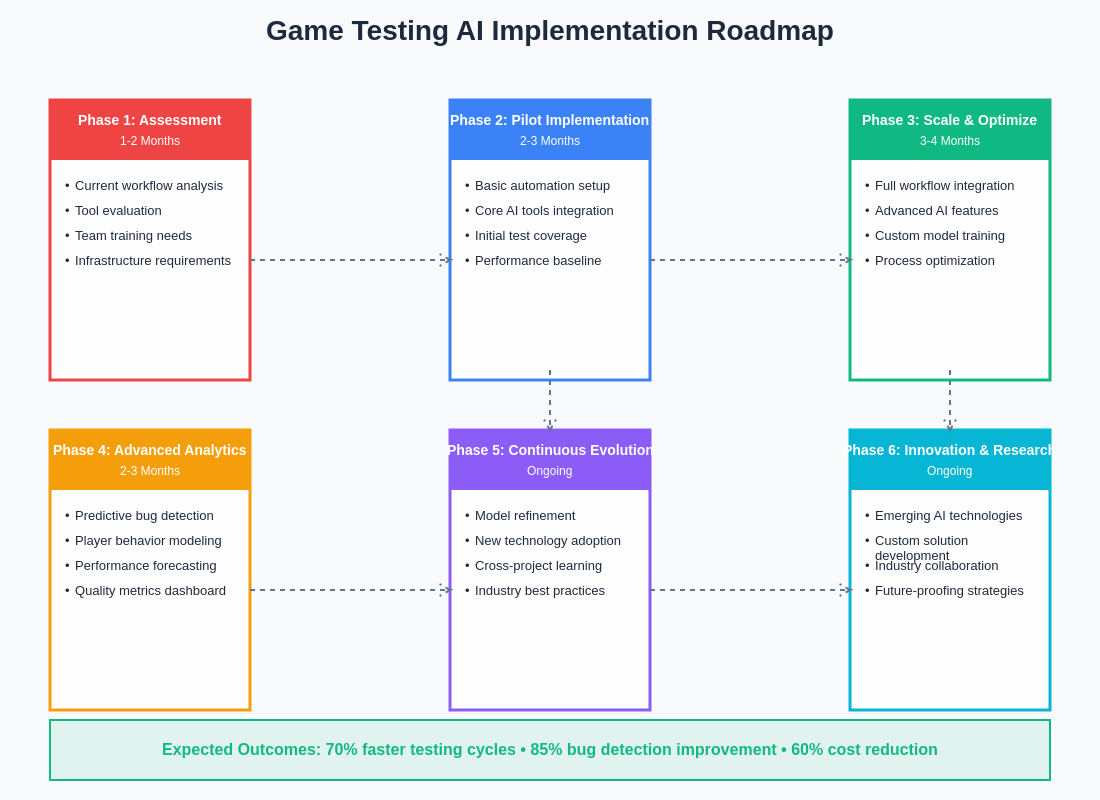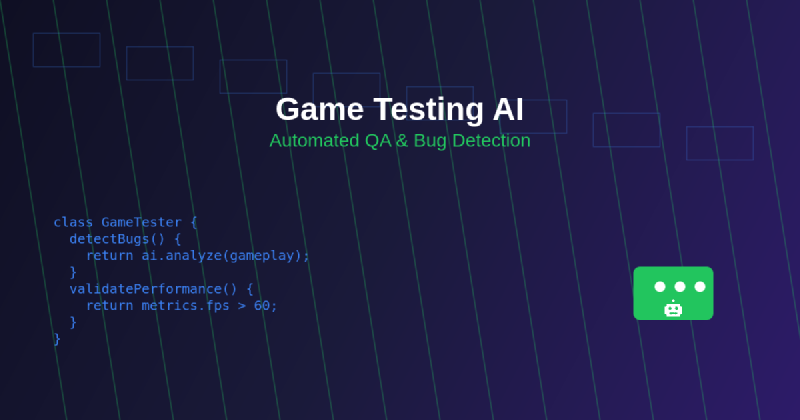The gaming industry has reached unprecedented levels of complexity, with modern titles featuring intricate gameplay mechanics, vast open worlds, and sophisticated multiplayer systems that demand rigorous quality assurance protocols. Traditional manual testing approaches, while thorough, struggle to keep pace with the rapid development cycles and comprehensive coverage requirements of contemporary game development. The emergence of artificial intelligence in game testing has revolutionized quality assurance methodologies, introducing automated systems capable of detecting bugs, evaluating gameplay balance, and ensuring consistent user experiences across diverse gaming scenarios.
Explore the latest AI innovations in gaming to understand how cutting-edge technologies are reshaping every aspect of game development and testing. The integration of AI-powered testing solutions represents a fundamental shift in how development teams approach quality assurance, moving from reactive bug-fixing methodologies to proactive, intelligent systems that can predict, identify, and resolve issues before they impact player experiences.
The Evolution of Game Testing Through AI
Game testing has historically been a labor-intensive process requiring extensive manual playtesting, systematic bug reproduction, and comprehensive coverage of gameplay scenarios across multiple platforms and configurations. The complexity of modern games, with their branching narratives, procedural content generation, and dynamic difficulty adjustments, has created testing challenges that exceed the practical limitations of traditional manual approaches. Artificial intelligence has emerged as a transformative solution, offering automated testing capabilities that can simulate thousands of gameplay hours, systematically explore game content, and identify issues that might escape human testers due to time constraints or cognitive limitations.
The sophistication of AI-powered game testing extends beyond simple automation of repetitive tasks. Modern AI testing systems employ machine learning algorithms to understand gameplay patterns, recognize visual anomalies, and evaluate game balance across different player skill levels and playstyles. These intelligent systems can adapt their testing strategies based on previous findings, focusing attention on areas of the game that have historically shown higher bug densities or player complaints. This adaptive approach ensures that testing resources are allocated efficiently while maintaining comprehensive coverage of critical game functionality.
Intelligent Bug Detection and Classification
Traditional bug detection relies heavily on human observation and manual reporting processes that can be inconsistent and time-consuming. AI-powered bug detection systems have revolutionized this aspect of quality assurance by implementing computer vision algorithms that can automatically identify visual glitches, texture problems, animation inconsistencies, and rendering errors across different graphics settings and hardware configurations. These systems can process gameplay footage at speeds far exceeding human capabilities, flagging potential issues for further investigation and automatically categorizing bugs based on severity and impact on player experience.
The classification capabilities of AI testing systems extend beyond visual detection to include behavioral analysis of game systems. Machine learning algorithms can identify patterns in game state changes that indicate potential logic errors, balance issues, or performance bottlenecks. By analyzing vast amounts of gameplay data, these systems can detect subtle bugs that might only manifest under specific conditions or after extended play sessions, issues that traditional testing methods might miss due to their random or infrequent occurrence.
Enhance your development workflow with Claude’s advanced AI capabilities for comprehensive code analysis and intelligent bug detection that goes beyond traditional testing approaches. The combination of human expertise and AI-powered analysis creates a robust testing environment where both obvious and subtle issues are identified and addressed systematically.
Automated Gameplay Testing and Validation
Automated gameplay testing represents one of the most significant advances in AI-powered game QA, enabling systematic exploration of game content through intelligent bot players that can simulate diverse playstyles and decision-making patterns. These AI agents can be programmed to follow specific testing protocols while also exhibiting emergent behaviors that uncover unexpected interactions between game systems. Unlike scripted testing approaches that follow predetermined paths, AI-driven gameplay testing can adapt to changing game states and explore alternative routes through game content, ensuring comprehensive coverage of possible player experiences.
The validation capabilities of automated testing systems extend beyond simple functionality verification to include sophisticated analysis of game balance, difficulty curves, and player engagement metrics. AI systems can simulate thousands of players with different skill levels and preferences, generating data about optimal strategies, potential exploits, and areas where players might become frustrated or disengaged. This comprehensive analysis provides development teams with actionable insights for improving game design and ensuring that player experiences align with intended design goals.

The systematic approach to AI-powered game testing involves multiple interconnected phases, each contributing essential data for comprehensive quality assurance. From initial automated exploration through detailed bug analysis and final validation, AI systems create a continuous feedback loop that improves testing effectiveness over time.
Performance Optimization Through AI Analysis
Game performance optimization has traditionally required extensive profiling sessions and manual analysis of performance bottlenecks across different hardware configurations and gameplay scenarios. AI-powered performance analysis systems can automatically monitor frame rates, memory usage, loading times, and system resource utilization during automated testing sessions, identifying performance issues that might not be apparent during limited manual testing. These systems can correlate performance problems with specific game events, environmental conditions, or player actions, providing developers with precise information about optimization opportunities.
The predictive capabilities of AI performance analysis extend beyond identifying existing problems to forecasting potential performance issues based on code changes and content additions. Machine learning algorithms trained on historical performance data can evaluate new game features and predict their impact on system performance across different hardware configurations. This proactive approach enables development teams to address performance concerns during the development process rather than discovering them during final optimization phases or after release.
Multiplayer and Network Testing Automation
Multiplayer games present unique testing challenges that require coordination of multiple clients, network latency simulation, and comprehensive analysis of server-client interactions under various network conditions. AI-powered multiplayer testing systems can simulate hundreds or thousands of concurrent players, each with different behavioral patterns and network conditions, creating realistic stress tests that reveal scalability issues, synchronization problems, and potential exploits in multiplayer game mechanics.
The sophistication of AI-driven multiplayer testing includes simulation of various player behaviors, from cooperative gameplay to competitive strategies and even disruptive actions that might be employed by malicious players. These comprehensive simulations help identify edge cases in multiplayer systems, evaluate the effectiveness of anti-cheat measures, and ensure that network code can handle the full spectrum of player interactions that might occur in live environments.
Accessibility and Usability Testing Enhancement
Accessibility testing for games requires evaluation of user interfaces, control schemes, and gameplay mechanics across diverse player needs and capabilities. AI systems can automatically test games using simulated accessibility requirements, such as color blindness, motor limitations, or cognitive processing differences, identifying areas where games might be inaccessible to certain player populations. These automated accessibility audits can evaluate text readability, interface navigation efficiency, and alternative input method compatibility far more comprehensively than manual testing approaches.
Leverage Perplexity’s research capabilities to stay informed about accessibility standards and inclusive design practices that enhance game experiences for all players. The integration of AI-powered accessibility testing ensures that games meet diverse player needs while maintaining engaging gameplay experiences across different accessibility requirements.
Localization and Cultural Testing Through AI
Game localization involves more than language translation, requiring cultural adaptation of content, user interface elements, and gameplay mechanics for different markets and regions. AI-powered localization testing can automatically verify text rendering, interface layout, and cultural appropriateness across multiple languages and regions, identifying issues such as text overflow, incorrect character encoding, or culturally insensitive content that might affect game reception in specific markets.
The comprehensive nature of AI localization testing includes evaluation of audio synchronization for dubbed content, subtitle accuracy and timing, and regional compliance with content rating requirements. These automated systems can process vast amounts of localized content far more efficiently than manual review processes, ensuring that games maintain quality and cultural sensitivity across global markets.
Regression Testing and Continuous Integration
Regression testing ensures that new code changes or content additions do not introduce bugs into previously functioning game systems. AI-powered regression testing can automatically execute comprehensive test suites whenever code changes are made, quickly identifying any functionality that has been broken by recent modifications. These systems can prioritize testing based on the scope and risk level of code changes, focusing intensive testing on areas most likely to be affected by recent development work.
The integration of AI testing systems with continuous integration pipelines enables development teams to maintain high quality standards throughout the development process rather than relying solely on pre-release testing phases. Automated testing can run continuously during development, providing immediate feedback about potential issues and enabling rapid iteration on game features without compromising overall stability and quality.

The quantitative advantages of AI-powered testing become evident when comparing coverage, speed, consistency, and cost-effectiveness metrics. AI systems demonstrate superior performance across multiple dimensions of testing effectiveness while freeing human testers to focus on creative and strategic aspects of quality assurance.
Machine Learning for Predictive Quality Assurance
Machine learning algorithms can analyze historical bug data, development patterns, and player feedback to predict areas of games that are likely to contain issues or cause player frustration. These predictive models can guide testing priorities, helping QA teams focus their efforts on the most critical areas of game development. By learning from past projects and ongoing development data, AI systems can identify patterns that correlate with bug occurrence, enabling proactive testing strategies that prevent issues rather than simply detecting them.
The sophistication of predictive quality assurance extends to player behavior modeling, where AI systems can forecast how different player segments will interact with new game features or content. This predictive capability enables development teams to optimize game design for anticipated player behaviors while identifying potential areas of confusion or frustration before content reaches players.
Real-time Monitoring and Live Game Analysis
AI-powered monitoring systems can continue quality assurance efforts after game release, analyzing player behavior data, crash reports, and performance metrics to identify emerging issues in live game environments. These systems can automatically detect unusual patterns in player data that might indicate undiscovered bugs, balance problems, or technical issues affecting specific player populations or hardware configurations.
The real-time analysis capabilities of AI monitoring extend to dynamic content updates and seasonal events, ensuring that new content additions maintain quality standards and integrate seamlessly with existing game systems. This continuous monitoring approach enables rapid response to emerging issues while providing ongoing insights for future development and content creation efforts.
Integration with Development Workflows
The successful implementation of AI-powered game testing requires seamless integration with existing development tools and workflows. Modern AI testing platforms can integrate with popular game engines, version control systems, and project management tools, providing automated testing capabilities that complement rather than disrupt established development processes. This integration ensures that AI testing insights are actionable and can be efficiently incorporated into development decision-making processes.
The collaborative aspect of AI-enhanced testing involves creating workflows where human testers and AI systems work together effectively, with AI handling systematic and repetitive testing tasks while human testers focus on creative evaluation, user experience assessment, and strategic quality assurance planning. This hybrid approach maximizes the strengths of both human expertise and AI capabilities.

The strategic implementation of AI-powered game testing requires careful planning and phased deployment to maximize effectiveness while minimizing disruption to existing workflows. This roadmap provides a structured approach to integrating AI testing capabilities into game development processes.
Cost-Effectiveness and Resource Optimization
AI-powered game testing offers significant cost advantages over traditional manual testing approaches, particularly for large-scale games that require extensive testing across multiple platforms and configurations. Automated testing systems can operate continuously without the labor costs associated with human testers, while providing more comprehensive coverage and consistent results. The initial investment in AI testing infrastructure typically provides rapid return on investment through reduced testing cycles, earlier bug detection, and improved game quality.
The resource optimization benefits of AI testing extend beyond direct cost savings to include improved development efficiency and reduced post-release maintenance costs. By identifying and resolving issues earlier in the development process, AI-powered testing helps prevent costly post-release patches and reduces the risk of negative player experiences that could impact game commercial success.
Future Developments and Industry Evolution
The continuous advancement of AI technologies promises even more sophisticated game testing capabilities, including natural language processing for automated player feedback analysis, advanced computer vision for detecting subtle visual inconsistencies, and reinforcement learning for developing more intelligent testing strategies. These emerging technologies will further enhance the effectiveness of automated quality assurance while reducing the time and resources required for comprehensive game testing.
The evolution of AI-powered game testing will likely include greater integration with game development tools, more sophisticated player behavior simulation, and enhanced predictive capabilities that can anticipate quality issues before they occur. As AI technologies continue to mature, game testing will become increasingly proactive rather than reactive, enabling development teams to create higher quality games more efficiently while maintaining the creative and innovative aspects that define exceptional gaming experiences.
The transformation of game testing through artificial intelligence represents a fundamental shift toward more intelligent, efficient, and comprehensive quality assurance methodologies. By leveraging AI capabilities for automated testing, bug detection, and predictive analysis, game development teams can maintain higher quality standards while reducing development time and costs. The future of game testing lies in the intelligent collaboration between human expertise and AI capabilities, creating a testing environment where both systematic analysis and creative evaluation contribute to exceptional game experiences that meet the evolving expectations of modern players.
Disclaimer
This article is for informational purposes only and does not constitute professional advice. The views expressed are based on current understanding of AI technologies and their applications in game testing and quality assurance. Readers should conduct their own research and consider their specific requirements when implementing AI-powered testing solutions. The effectiveness of AI testing systems may vary depending on game complexity, platform requirements, and development team expertise levels.
